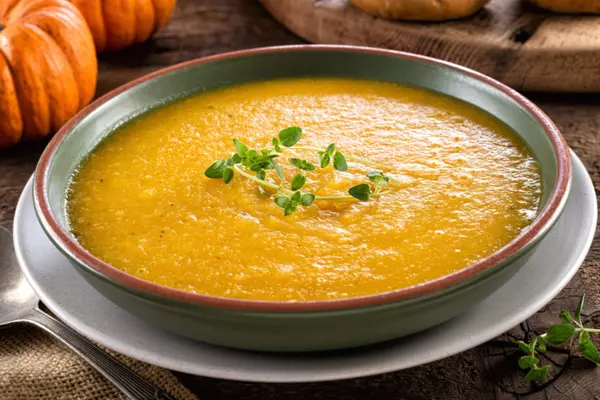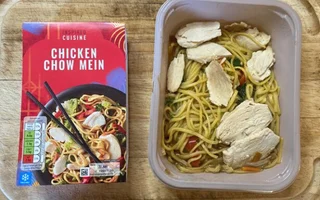Welcome to our blog post on how to thicken soup! Whether you’re dealing with a soup that’s too watery or just looking to add some extra body to your dish, thickening soup can be an important step in the cooking process.
You can use several methods to achieve the desired consistency, and in this post, we’ll explore some of the most effective techniques.
From classic thickening agents like flour and cornstarch to modern alternatives like pureed vegetables and beans, there are plenty of options to choose from. So if you’re ready to learn more about thickening soup, read on!
How To Thicken Soup: 5 Simple Techniques For Thickening Soup
Several different ingredients can be used to thicken the soup, each with its unique properties and benefits. Some common soup thickeners include:
1. Flour
Flour is a classic thickening agent often used in the roux, a mixture of flour and fat (such as butter) used to thicken soups, sauces, and gravies.
Flour can be added directly to the soup or mixed with a small amount of cold water or broth to form a slurry, which is then added to the soup. It’s important to note that flour can cause the soup to become cloudy if not used properly.
2. Cornstarch
Cornstarch is another common thickener that is often used in soups and sauces. It is made from corn and has a very fine, powdery texture.
Like flour, cornstarch should be mixed with a small amount of cold water or broth to form a slurry before being added to the soup.
Cornstarch is a good choice for soups that need to be thickened quickly, as it thickens almost immediately upon being added to the soup.
3. Pureed Vegetables
Pureed vegetables, such as potatoes, carrots, or squash, can add both flavor and thickness to soups. Simply puree the vegetables in a blender or food processor, stirring them into the soup.
4. Pureed Beans
Pureed beans, such as navy beans or white beans, can also be used to thicken the soup. Like pureed vegetables, they can add both flavor and thickness to the dish. Simply puree the beans in a blender or food processor and then stir them into the soup.
5. Arrowroot
Arrowroot is a starch derived from certain tropical plants’ roots. It is often used as a thickener in soups and sauces, as it has the ability to thicken at a lower temperature than other thickeners.
Arrowroot should be mixed with a small amount of cold water or broth to form a slurry before being added to the soup.
Ultimately, the best soup thickener for you will depend on your personal preferences and the needs of your recipe. Experiment with different thickening agents to see which works best for you.
The Surprising Ingredient You Can Use To Thicken Soups
Is It Better To Thicken Soup With Flour Or Cornstarch?
Both flour and cornstarch can be used to thicken soups, and which one you choose will depend on your personal preferences and the needs of your recipe. Here are some key differences between the two:
- Texture: Flour tends to create a thicker, more velvety texture in soup, while cornstarch will produce a slightly clearer and glossier finish.
- Thickening Power: Cornstarch is a more powerful thickener than flour, so you will need to use less of it to achieve the same level of thickness.
- Flavor: Flour has a subtle, slightly nutty flavor that can add depth to the flavor of the soup. Cornstarch has a more neutral flavor and will not significantly alter the taste of the soup.
- Cooking Time: Flour takes longer to fully incorporate into the soup and will continue to thicken as the soup cooks. Cornstarch thickens almost immediately upon being added to the soup and will not continue to thicken over time.
Ultimately, the choice between flour and cornstarch will depend on your personal preferences and the needs of your recipe. Flour may be the better option if you want a thicker, more velvety texture and don’t mind a slightly nutty flavor.
If you prefer a clearer, glossier finish and don’t want to alter the flavor of the soup, cornstarch may be the better choice. Experiment with both to see which works best for you.

What Is The Healthiest Way To Thicken A Soup?
There are several ways to thicken soup that are relatively healthy, depending on your specific dietary needs and preferences. Some options to consider include:
Pureed Vegetables
Pureed vegetables, such as potatoes, carrots, or squash, can add both flavor and thickness to soups. Simply puree the vegetables in a blender or food processor, stirring them into the soup.
This method is a good source of fiber and nutrients and can also help add natural sweetness to the soup.
Pureed Beans
Pureed beans, such as navy beans or white beans, can also be used to thicken the soup. Like pureed vegetables, they can add both flavor and thickness to the dish.
Simply puree the beans in a blender or food processor and then stir them into the soup. This method is a good source of protein, fiber, and nutrients.
Greek Yogurt
Greek yogurt can be used to thicken the soup by stirring a small amount into the soup. It adds creaminess and protein to the soup, but be aware that it will also add a tangy flavor to the soup. This method is a good source of protein and calcium.
Ultimately, the healthiest way to thicken soup will depend on your specific dietary needs and preferences. Consider trying out different methods to see which works best for you.
Conclusion
Thickening soup is an important step in the cooking process that can help to add body and flavor to the dish. You can use several methods to achieve the desired consistency, including classic thickening agents like flour and cornstarch and modern alternatives like pureed vegetables and beans.
Ultimately, the best soup thickener for you will depend on your personal preferences and the needs of your recipe. Experiment with different thickening agents to see which works best for you.
We hope this blog post has provided you with useful information and inspiration for thickening your own soups at home. Happy cooking!
- Chocolate Chip Cookie Recipe Without Chocolate Chips? Yes! - March 9, 2025
- Chili’s Blackberry Margarita Recipe – Make It At Home! - March 3, 2025
- Classic Marble Cake Recipe – Perfect Swirls Every Time - February 25, 2025


